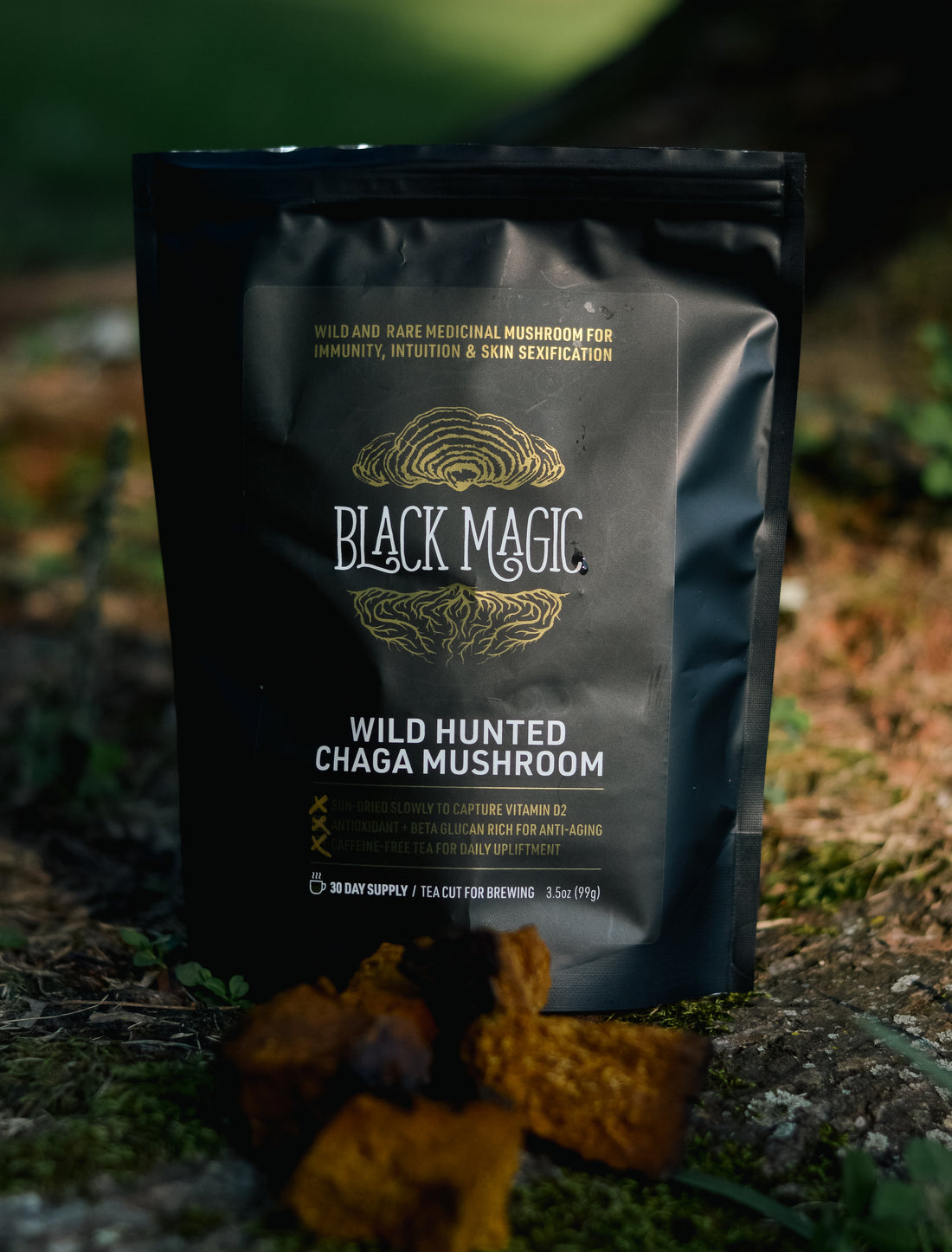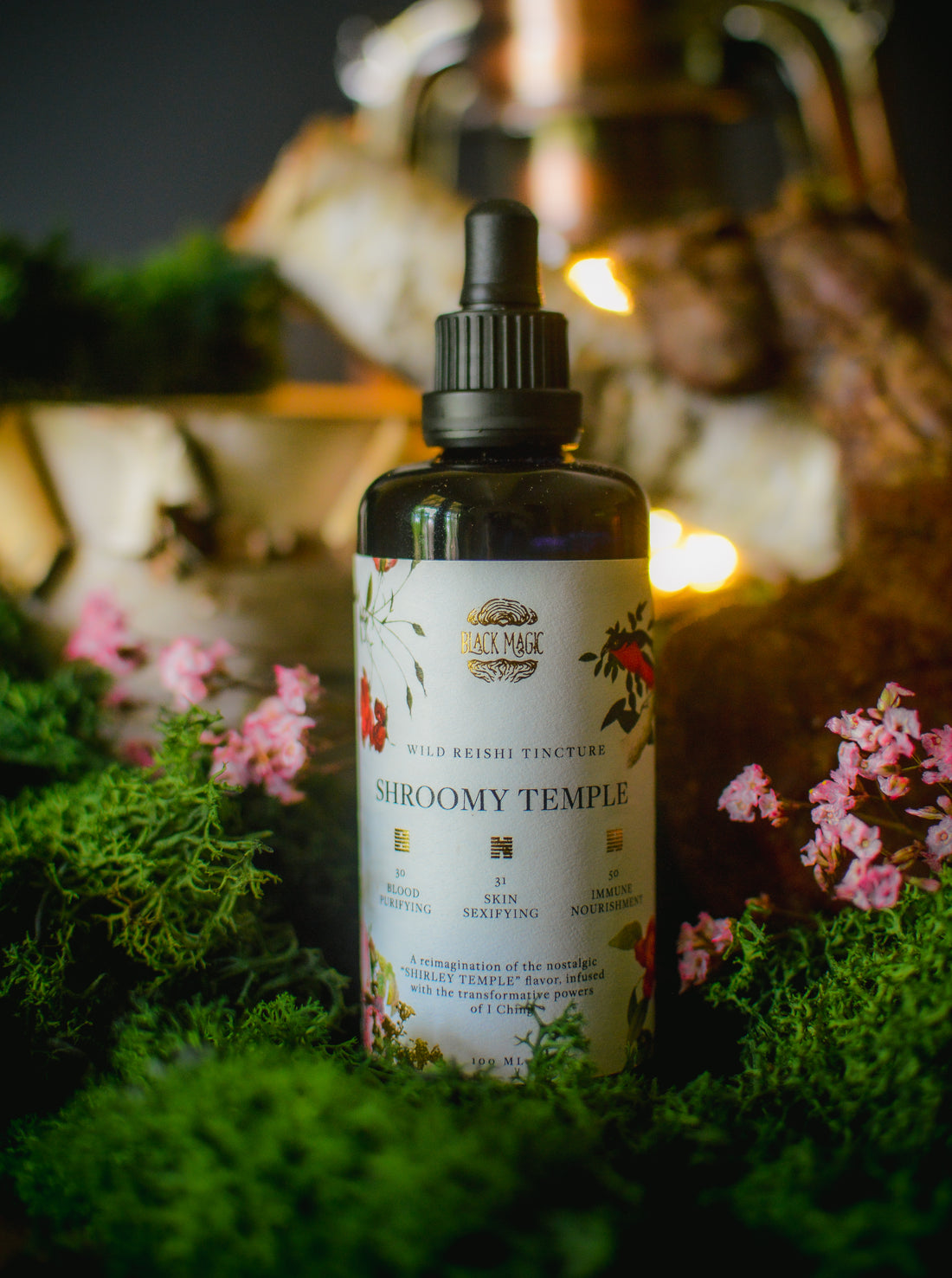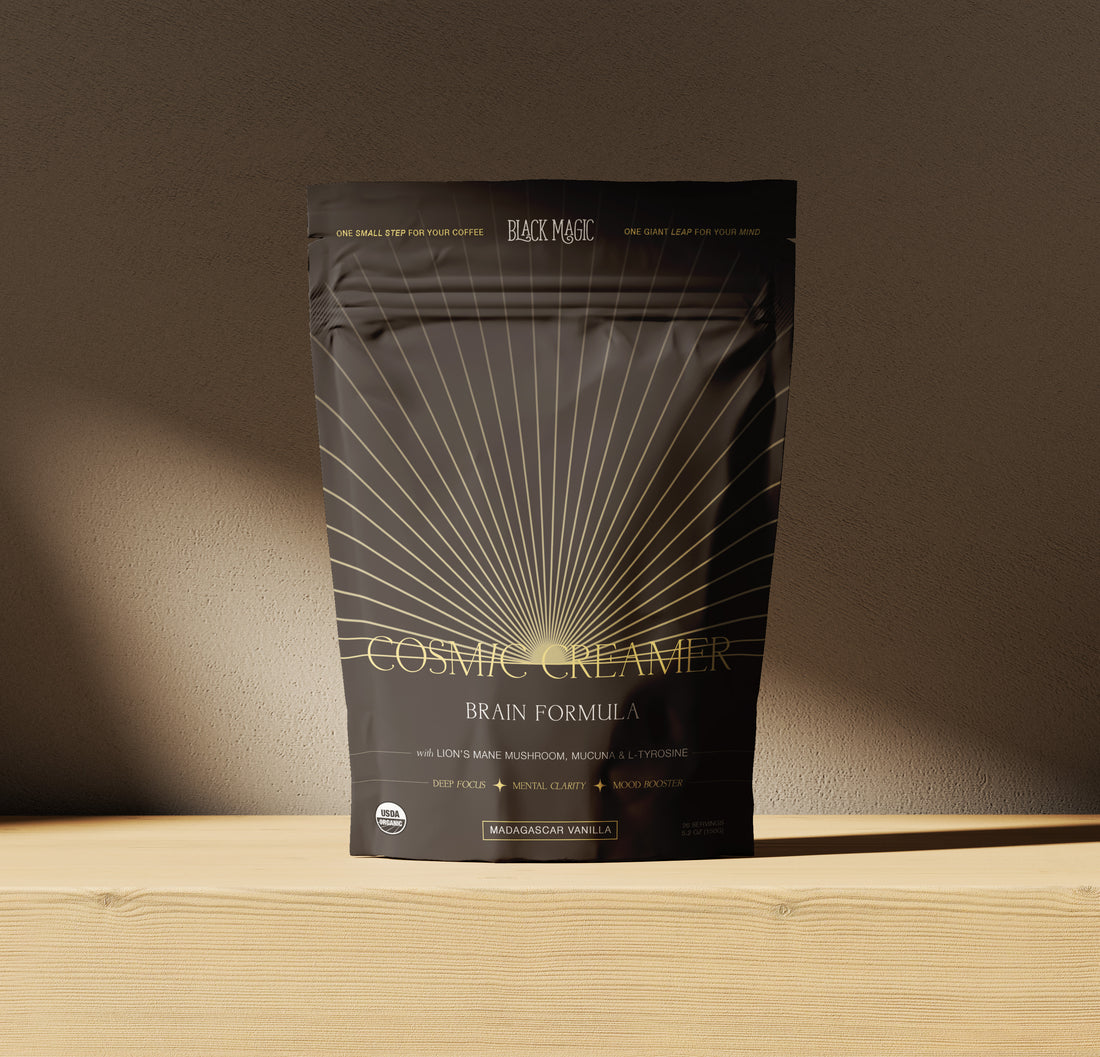Wild vs. Lab-Grown Mushrooms: Why Ethical Foraging Wins for Potency and Sustainability
It's true that lab-grown mushrooms help scale supply and reduce pressure on wild stands … but climate‑controlled grow rooms, processed substrates, and less phytochemical complexity (aka: nutrients and beneficial compounds) have many of us wondering how “green” and complete they really are. Ethically wild‑foraged fungi—especially tree‑symbiotic species like chaga—can offer a richer nutrient profile shaped by real forest stress, as long as harvesting is regenerative.
Let’s unpack the science and how to choose what mushroom product is right for you.
Labs vs. Nature
As we know, functional mushrooms have become all the rage (and they deserve it!). However, as demand for these medicinal powerhouses has risen over the years, brands have faced a choice: grow indoors at scale, or head into the forest and harvest from living ecosystems. Sustainability claims fly on both sides. So do potency claims.
Here's what to consider if you're concerned about sustainability.
The Promises of Lab-Grown
Indoor cultivation sounds ideal: predictable supply, less pressure on wild stands, year‑round availability, and cleaner production variables (moisture, contamination, pests). For some species—especially fast growers or those not dependent on a specific tree host—indoor farming makes economic and logistical sense. It also enables research control: same strain, same substrate, repeatable results, and that works if you’re standardizing an ingredient panel for a beverage line.
Sure, that’s a win for them, but is it a win for you?
With all that being said for the "promises of lab grown" … the lab production method of growing mushrooms isn’t impact‑free like they would have you believe.

Is This Actually Sustainable … or is Something Missing?
Consider that the reliance on monoculture-like substrates in lab settings raises concerns about long-term soil health and resource depletion. Producing vast quantities of grain or sawdust substrates often involves intensive agriculture or logging, which can degrade ecosystems and contribute to deforestation or soil erosion. These upstream impacts are rarely accounted for in the "sustainable" label of lab-grown mushrooms, yet they add to the environmental cost of scaling production to meet global demand.

1. Energy Load: Climate‑controlled rooms require heating/cooling, humidity, airflow, and often supplemental lighting. That energy footprint varies with scale and power source.
2. Substrate Inputs: Many mushroom grows use sterilized grain, sawdust blocks, or supplemented mediums that must be produced, transported, and discarded.
3. Packaging + Waste Streams: Indoor grows often generate plastic, filter patch bags, disposable tubing, and sanitation chemicals.
4. Localization vs Shipping: A local indoor grow powered by renewables might look great. An industrial grow shipped globally? Not so much.
This discrepancy highlights a key question: can a system that generates significant waste and relies on finite resources truly be called sustainable, even if it reduces pressure on wild mushroom populations?
The Missing Link: Harvesting Methods + Nutrition
There is a reason medicinal mushrooms have been revered in ancient cultures around the globe for thousands of years: they contain rare phytochemicals and antioxidants not easily found elsewhere, which play key roles in longevity and avoiding disease. Yet we often forget that these compounds don't simply show up in our medicinal mushrooms–they develop within the mushrooms based on the environment and substrate the mushrooms are growing in.

Some mushrooms form chemical compounds not just from genetics—but from relationship. Tree hosts, seasonal stress, UV exposure, freeze‑thaw cycles, microbial competition, and mineral-rich environments all influence their bioactive profiles. When we remove those variables by growing them in labs, we may get mushrooms that are clean and consistent—but potentially less chemically diverse.
Examples:
1. Chaga (Inonotus obliquus): Grows primarily on birch; draws precursors like betulin from the host, which can convert into bioactive derivatives. No birch, different chemistry.
2. Reishi relatives in the wild: Environmental stress can influence triterpene expression.
3. Adaptogenic Signaling: “Adaptogens” by definition help the body adapt to stress; many researchers note that stressed organisms often produce more secondary metabolites. A low‑stress grow environment may not trigger the same defense chemistry.
As you can see, whole‑system growing often yields whole‑spectrum compounds. If you isolate mushrooms from their natural habitat, they may lack the very compounds you're consuming them for.
Wild Foraged Isn't Just a Buzz Word.
Additionally, the microbial ecosystems in wild environments play a crucial role in shaping a mushroom’s chemical profile. Soil bacteria, competing fungi, and other microorganisms challenge wild mushrooms to produce unique defense compounds, such as antimicrobial peptides or flavonoids, that are less prevalent in sterile lab settings.
A 2020 study in Fungal Biology highlighted that wild-harvested mushrooms often exhibit a richer array of these secondary metabolites compared to their cultivated counterparts, suggesting that the "wild" context is not just a backdrop but an active contributor to their medicinal value. Choosing wild-harvested mushrooms ensures you’re accessing this full spectrum of nature’s chemistry, crafted through millennia of ecological relationships.
The Ethics of Wild Foraging
Obviously, wild harvesting done poorly can damage ecosystems, spread contamination, or strip bark (chaga risk!) beyond recovery. But done well, ethical foraging follows strict percentage‑based harvest limits, leaves living tissue to regrow, rotates sites, and respects land stewardship—often in partnership with local harvesters who understand the woods.
Ethical wild foraging also involves deep respect for the cultural and ecological significance of the landscapes where mushrooms grow. Many indigenous and local communities have harvested fungi for generations, guided by traditional knowledge that ensures long-term forest health.
 Image: The Black Magic team blessing the tree while harvesting.
Image: The Black Magic team blessing the tree while harvesting.
Moreover, responsible foraging contributes to scientific understanding and conservation efforts. Ethical harvesters often work with mycologists and ecologists to monitor fungal populations and their roles in forest ecosystems, helping to maintain biodiversity.
For example, careful harvesting of chaga can actually stimulate tree health by encouraging natural pruning, while overharvesting can weaken the host. By adhering to guidelines like those set by sustainable forestry programs, ethical foragers ensure that their practices align with broader environmental goals, preserving the delicate balance of forest ecosystems for future generations.
How to Choose Mushroom Products
To find brands that are harvesting ethically, look for: harvest protocols, region traceability, and time‑in‑ecosystem (e.g., at least 5–7 years of regrowth cycles for certain species before re-harvest).
Use this 5‑factor filter when reading labels or talking to brands:
|
Question |
Why It Matters |
Red Flag |
Good Sign |
|
Species Source? |
Tree symbiosis vs grain growth changes chemistry. |
“Mushroom blend” w/ no details. |
“Wild birch-grown chaga.” |
|
Part Used? |
Fruiting body vs mycelium on grain = different profiles. |
“Mycelium biomass” only. |
“Dual-extracted fruiting bodies.” |
|
Sustainability Proof? |
Claims ≠ data. |
Vague “sustainably sourced.” |
Energy data, harvest codes, partner forests. |
|
Testing? |
Active compound ranges vary. |
No lab results. |
3rd‑party assays for beta‑glucans/triterpenes. |
|
Traceability? |
Trust builds conversion. |
No origin info. |
Lot codes tied to region & batch. |
Our Mushroom Foraging Practices at Black Magic Alchemy
We believe mushrooms are relationships made visible. Our chaga, reishi, and lion’s mane sourcing prioritizes wild mushroom harvests in clean northern boreal forests and small regenerative partner operations.
We harvest respectfully, sun-dry to preserve active compounds, and craft whole‑spectrum extracts meant to preserve what the forest created—not erase it.
Our commitment to ethical foraging extends beyond sustainable harvesting to fostering partnerships with local communities who have deep-rooted knowledge of their forests. These collaborations ensure that our practices honor both the land and its stewards, maintaining ecological balance while supporting livelihoods.
By working closely with experienced foragers, we ensure that each harvest respects the natural cycles of the forest, preserving fungal populations and their symbiotic relationships with trees for future generations.
Additionally, we prioritize minimal processing to retain the mushrooms’ natural potency. Our sun-drying and low-heat extraction methods are designed to protect delicate bioactive compounds like beta-glucans and triterpenes, which can be compromised by industrial processing.
 While lab-grown mushrooms offer consistency and scalability, wild-harvested mushrooms provide unique benefits that make them the superior choice for those prioritizing potency, sustainability, and a deeper connection to the environment.
While lab-grown mushrooms offer consistency and scalability, wild-harvested mushrooms provide unique benefits that make them the superior choice for those prioritizing potency, sustainability, and a deeper connection to the environment.












